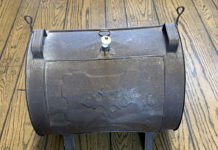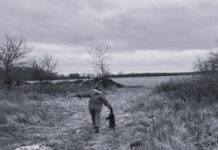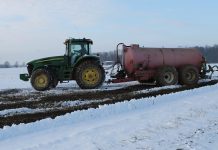Whether you need help identifying birds for Project FeederWatch, or you’re preparing for next month’s Great Backyard Bird Count, or you’d just like to recognize the birds at your feeders, here are some tips to help identify common winter birds.
If you have a feeder in the backyard, you’re likely to see most of these species.
Identifying backyard birds is not difficult, especially in winter. Fewer than 25 species commonly visit winter feeders. The key isn’t mastering a field guide, it’s simply knowing which birds to expect.
Basic cast of characters
Here’s a list of common winter feeder birds and a brief summary of their most conspicuous characteristics. They may not all visit every feeder, and you may see others that aren’t on the list, but by learning this basic cast of characters you’ll be able to recognize 90 percent of the winter birds that brighten your yard.
(For illustrations, voices and more information visit www.mbr-pwrc.usgs.gov/id/framlst/infocenter.html )
– Mourning dove — brownish-gray, chunky body, small head, long pointed tail; distinctive wing whistle as dove takes off; call a mournful, owl-like cooing.
– Downy woodpecker — smallest woodpecker; black and white; white back and belly; bill shorter than head; males have red spot on back of head; hitch their way up tree trunks.
– Hairy woodpecker — like Downy, but larger; bill heavy and longer than head.
– Red-bellied woodpecker — poorly named, pale pink wash on belly; zebra-like, black and white barred back; white wing patches flash in flight; crown and nape red on male; red nape only on female. (Red-headed woodpeckers have entirely red heads and are uncommon.)
– Pileated woodpecker — large, crow-sized; red crest, black body, white throat, white cheek stripe; male has red mustache; comes to suet.
– Black-capped and Carolina chickadees — look-a-likes; small; black cap and throat; gray body; check field guide for range maps.
– Tufted titmice — small, gray, crested, black forehead, pale rusty sides under wing.
– White-breasted nuthatch — black cap, white face and breast; acrobatically climbs headfirst down tree trunks; call a nasal, “ank, ank.”
– Blue jay — large, bold, loud, aggressive; crested; black bars and white patches on blue wings and tail; black “necklace” on white chest.
– European starling – chunky, medium-sized bird with short tail; in winter plumage body dark and covered with many white spots; bill dark.
– Northern cardinal — bright red; crested; black face; huge orange bill; females duller.
– Song sparrow — brown; dark stripes outline white throat; streaking on breast often converges to a prominent central spot; pumps tail in flight.
– White-throated sparrow — white throat; light eyebrow stripe turns yellow in front of eye; bill dark. Whistles high pure, “Old Sam Peabody, Peabody, Peabody” anytime of year.
– White-crowned sparrow – similar to white-throat; black-and-white striped crown; pink bill; pale throat, but not bright white; no yellow on face.
– Tree sparrow — rusty crown; plain gray breast with dark central spot; two white wing bars.
– Eastern towhee — formerly called “rufous-sided towhee;” black hood, red eye, black upper body, rusty sides, white belly, white wing patches, and tail corners.
– Dark-eyed junco — the most commonly seen visitor at backyard feeders; often called snow bird; charcoal gray body, white belly; white outer tail feathers; light-colored bill.
– Red-winged blackbird — male all black with bright red shoulder patch; female resembles a large sparrow, brown and heavily streaked.
– Brown-headed cowbird — male shiny black with brown head; female is nondescript brown overall.
– American goldfinch — small; dull plumage in winter; (in spring and summer males are bright yellow, black and white); yellow-green or brownish, dark wings with lighter wing bars; often abundant at feeders.
– House finch — reddish and sparrow-like; head, bib, and rump bright red; brown crown; belly white with brown streaks; females drab streaky brown.
– Purple finch — easily confused with house finch, but less common; more reddish overall; belly not streaked.
Supplement
Use this information to supplement what you find in your favorite field guide. To identify all the birds that will visit your backyard this winter, consult A Field Guide to Feeders Birds by Roger Tory Peterson ($9.95; 2000; Houghton Mifflin). It’s the best field guide to backyard birds.













a brownish black bird ran into my fence and probably died of a broken neck…on closer inspection it had pink flecks on it’s back..and a yellow curving bill…it was actually quite beautiful..do you know what this bird could be? I live in Boonville Missouri.